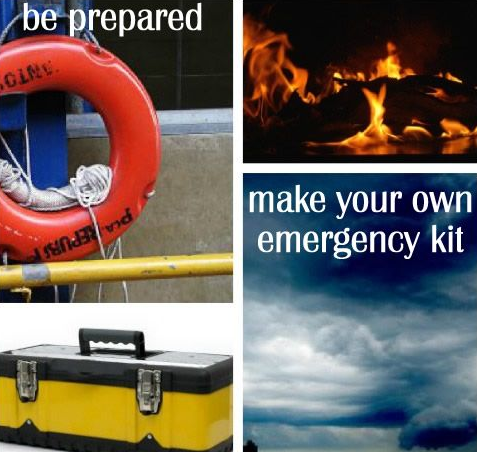When determining what to include in a survival kit, first decide where it will be kept. Is it a kit for your car? Or a camping trip? Or perhaps you’re going to keep it stored in your home for general preparedness. The location will determine which items you will want to pack in case of an emergency.
But wherever you plan on storing your emergency kit, there are ten essential items that must always be included.
Knife
A fixed-blade knife or cutting tool. This is a basic survival tool and is an essential part of any kit. You never know when you will need to cut something. This can be something simple like food, or fabric if you need to make a bandage.
Matches/Other Fire Starters
Magnesium fire-starters are popular and easy to use, as are lighters. Fire is necessary for warmth at night, cooking food, or signaling for help if you are stranded. Just make sure to have enough in case of a true emergency. Fire or warmth is a basic need and should be more then covered. Also consider carrying some kindling as well.
Map and Compass
Whatever region you plan to be in, keep a good map handy. If you are planning on being off the road, then bring a topographical map. Otherwise a road map is fine. Also know how to read and navigate a map. Combined with a compass, you will be able to establish your bearings. In this day and age many of us depend on our GPS to get us from place to place. But there can be situations where a GPS isn’t going to function. Having a map as a back up is a necessary item.
Flashlight and Extra Batteries
A LED flashlight is an ideal choice. Though LED flashlights consume less power, it’s best to have extra batteries handy. A hand-crank flashlight is also a good option, so you won’t have to worry about conserving power.
First Aid Kit
Should include the basics, such as gauze, tape, and band-aids. This is an obvious addiction. You really should have one of these in every location, house, car, mini one for purses. You never know when you will need it.
Stainless Steel Water Container
Not only can it carry water, but can also be used to boil/purify water from other sources. This is something that can always be stored in cars in case of emergencies or in camping gear.
Paracord
A minimum of 10-20 feet is reasonable for most ordinary uses such as lashing and tying down a shelter.
Food
The type and quantity will depend on the location or purpose. When traveling, small calorie-rich foods are best. When at home, a larger selection of canned foods are preferable.
Extra Clothing
Even during the summer, hypothermia can become a real possibility during a cold rain or in the night. Remember to dress in layers, so you can peel away clothing when it becomes too hot, or add them when it becomes too cold.
There are also a lot of cool clothing items that can be added to an emergency kit in case of random situations. Tecgen Select is one of many companies that offer flame resistant clothing to include in emergency kits. Check out your possibilities for a better idea of what might fit your needs.
Mylar Emergency Blanket
These are not only an excellent source of warmth, but in a pinch they can be used as an emergency shelter.
Keep in mind this list of essential items is only meant as a starting point for your own kit. You can customize it further to fit your specific needs. Remember, there is never any harm in being prepared.
Source: doomsdaymoose.com
Other useful resources:
Blackout USA (EMP survival and preparedness guide)
Backyard Innovator (All Year Round Source Of Fresh Meat,Vegetables And Clean Drinking Water)
Conquering the coming collapse (Financial advice and preparedness )
Liberty Generator (Easy DIY to build your own off-grid free energy device)
Backyard Liberty (Easy and cheap DIY Aquaponic system to grow your organic and living food bank)
Bullet Proof Home (A Prepper’s Guide in Safeguarding a Home )
Family Self Defense (Best Self Defense Strategies For You And Your Family)
Sold Out After Crisis (Best 37 Items To Hoard For A Long Term Crisis)
Brionna Kennedy is native to the Pacific Northwest, growing up in Washington, then moving down to Oregon for college. She enjoys writing on fashion and business, but any subject will do, she loves to learn about new topics. When she isn’t writing, she lives for the outdoors. Oregon has been the perfect setting to indulge her love of kayaking, rock climbing, and hiking.


